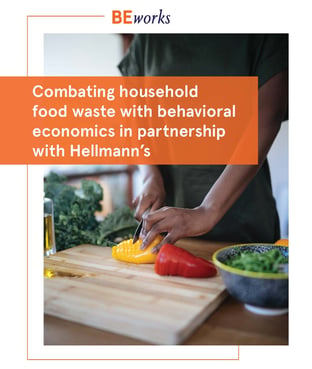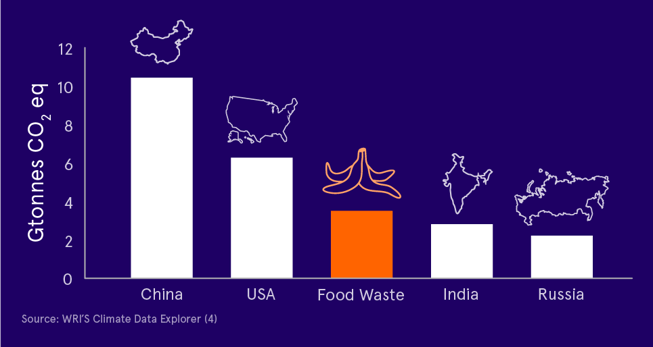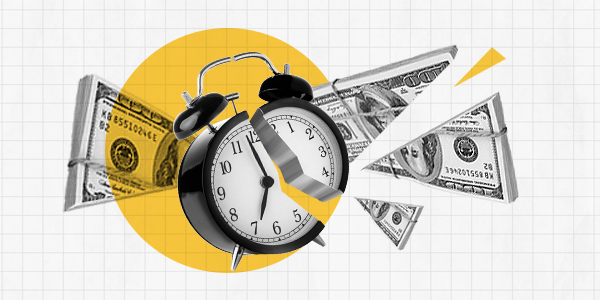As we celebrate our 51st Earth Day, there is perhaps no better time to reflect on the steps the global community is taking to curb our impact on the planet’s climate and its ecosystems. This move is sorely needed, as global temperatures continue setting record highs, impoverished communities endure floods brought on by deforestation and the resulting soil erosion, and the deep-sea sediment grows to harbor an estimated 14 billion tonnes of microplastic.
Without a doubt, international treaties such as the Paris Agreement and the Kyoto Protocol have played a crucial role in bringing the issue of climate change to the forefront and offering high-level blueprints for collective action on key metrics such as greenhouse gas emission. And yet, implementation is taking time.
Too much time, argue many critics. In recognition of the fact that the climate treaties have yet to be embedded in the regulations of many member states, the UN has urged business leaders to take initiative and be leaders in the transformation rather than compliers.
Increasingly, corporations are taking up the mantle. With each passing year, more and more companies join the ranks of those announcing ambitious plans to reduce their carbon footprints and drive a more sustainable economy.
Microsoft – a pioneer in this field – has consistently remained carbon neutral since 2012 through a host of carbon offsetting projects funded, in part, by a self-imposed internal carbon tax lauded by the UN. More recently, it has announced a commitment to become carbon negative by 2030 and to reclaim all the CO2 it has emitted since its inception in 1975.
The food sector is also experiencing its own rise of sustainability ambitions. And here, agendas frequently revolve around combating food waste. Whilst this strategy might seem low-key in a world that frequently buzzes with excitement in response to carbon capture tech development, the data indicate that it is highly underrated. The carbon footprint generated by food waste is greater than that produced by all of India – the third highest greenhouse gas emitting nation in the world. Tackling this issue is thus one of the most relevant tactics we can undertake in our CO2 reduction efforts.
One food industry giant that has recently stepped up to the plate (apologies, we simply couldn’t resist the phrasing!) is Unilever. With an estimated 2.5 billion people consuming Unilever goods on a daily basis, the company is acutely aware of the enormous impact that setting its sights on sustainability can have on global carbon emissions. And with this in mind, its leadership announced a comprehensive program aimed at reducing food and water waste, in alignment with the UN Sustainable Development Goals initiative.
Our team recently had the pleasure of partnering with Hellmann’s – the condiment-producing member of the Unilever family – to bring insights and tactics from behavioral economics to bear on their bold food waste reduction efforts.
The collaboration was borne out of the recognition that food waste, at its core, is a complex and poorly understood behavioral dilemma. Researchers still debate whether it is driven in large part by a lack of meal planning, excessive shopping, or poor food management behaviors – a question with enormous implications for where we should focus our attempts to tackle the issue.
While these uncertainties continue to be the subject of academic papers, the clock is ticking with increasing urgency on a global community in need of effective and scalable solutions. This served as the driving force behind our collaboration with Hellmann’s, during which we turned to dissecting peer-reviewed research as well as generating our own research insights on the causal factors underpinning food waste in a typical developed nation such as Canada. In doing so, we were able to empirically understand the dominant drivers of food waste in Hellmann’s target population and get to work in directly targeting these components with a behavior change program aimed at delivering results.

In keeping with our scientific approach, we rigorously evaluated our program in the largest randomized controlled trial (RCT) of food waste interventions its kind. Our study revealed our tactics to be both scalable and enormously effective, yielding a long-term 30% reduction in household food waste.
For those interested in digging into the science, we invite you to explore our recently released case study.
The space of sustainable initiatives continues to grow before our eyes – and a few ones are worth mentioning. Walmart Canada, for instance, has committed to achieving zero food waste to landfill by 2025, and Starbucks has taken similar steps to divert its food surplus to where it’s needed through its FoodShare program. More recently, we saw IKEA - the surprising 6th largest food chain in the world – launch its ScrapsBook for creatively using food leftovers, as well as a virtual #ScrapcookingSundays event. This move forms part of IKEA’s bold plan to become a leader in creating a truly circular economy where nothing goes to waste – whether it is beetroot tops or wood.

Having spent the past few months crafting tactics to help our client Hellmann’s combat food waste, we couldn’t be more thrilled to see the variety of sustainable initiatives being launched within this space. But the hiccups we see along the way (eg. Starbucks’
criticized shortfalls in diverting surplus foods) suggest that industry and policy leaders committed to sustainability need to have a serious collective discussion on how they
translate their good intentions into genuine results.
As a team of behavioral economists, we would like to offer 3 concrete tips to help you make the most of your sustainable initiative:
1. Understand your challenge from a human perspective
Figuring out how to change human behavior is not a simple endeavor. To have the best shot at succeeding, you need to first understand the psychological underpinnings of the behavior that you want to change. When it comes to food waste, for example, there is ample disagreement on the root cause. Some companies tackle the issue by assuming that people simply fail to notice foods as they approach their expiration (leading to the roll-out of solutions like Samsung’s AI ViewInside technology for
monitoring the contents of your fridge), while others assume that most people waste food because they lack the creativity to use up leftovers (leading to solutions like IKEA’s new ScrapsBook). Determining the main drivers of the behavior in question – and thus which solutions have the best chance of changing it - is not a matter of opinionated
debate. Rather, it is something to be understood through a scientific lens informed by a thorough exploration of the research literature and hypothesis-driven inquiries in your target population.
Aside from establishing the specific drivers of your target behavior, you also need to understand the broader cognitive biases at play. For instance, the better-than-average effect might mean that your stakeholders believe that they already are more eco-friendly than their neighbours, and thus don’t need to buy into your sustainable initiative.
Our team came up against this bias when we partnered up with a large Canadian electricity provider struggling to nudge consumers away from using electricity during peak hours, when the grid experiences its greatest strain. Conducting a behavioral diagnostic of the issue revealed a problematic tendency for people to regard themselves
as more resource-thrifty than their peers, and thus less in need of habit change. Our team went on to successfully correct this bias by integrating social proof tactics into our client’s communications with consumers. And this leads us to our next piece of advice:
2. Deploy nudge tactics informed by scientific insights
The behavioral economics literature has no shortage of examples of tactics that have the power to change behavior. Foot-in-the-door techniques can be used to ‘soften’ people to bigger and bigger behavior change commitments. Social norms can incentivize change by helping frame particular behaviors as socially appealing and widely practised. Endowment effects can make people feel personally invested in a venture before they even begin to actively take part. And well-designed public pledges can nudge people to follow through on stated intentions, which they otherwise do only 30-50% of the time.
For your best chance of generating positive behavior change, become aware of the variety of tactics that can facilitate this process. We encourage you to explore the wealth of scientific insights contained in peer-reviewed research, or to turn to behavioral scientists and economists to help you make the most of your efforts.
Finally, don’t forget to:
3. Evaluate effectiveness and scalability. Scientifically.

Your behavior change strategy might seem fool-proof because you based it on insights from an academic journal. Perhaps you’ve even tested it in a small sample of the population. Unfortunately, this does not guarantee that it will work effectively at scale. This so-called ‘voltage drop’ from R&D to scaled implementation is a common issue in social policy, and rooted in a variety of factors (these are discussed in a Freakonomics podcast episode featuring economics professor and former White House advisor John List, which we encourage you to check out here.)
Fortunately, the dilemma has a relatively simple solution: properly conducted scientific evaluation.
The safest way for you to know that your investment in any behavior change initiative will work is to test that very question in a randomized controlled trial (RCT) involving your target population, as well as resources and conditions that provide as close as possible an approximation to what you anticipate will be available at scale. Having an explicit validation-oriented strategy allows you to go far beyond paying lip service to your sustainability initiative, and to have a real-life impact, as seen in the game-changing and behaviorally-minded food waste project launched by Hellmann’s.
If your organization lacks the expertise to conduct such an experiment, it is worth seeking out a team of applied scientists to help you on your journey (Subtle hint: you are welcome to contact us at info@beworks.com).
Reflecting on where we are today – Earth Day 2021 and beyond – we hope that the private sector does not lose the precious momentum that propels so many of its leaders to pursue meaningful and sustainable initiatives. But let’s do much more than just hope. Let’s make things happen.











